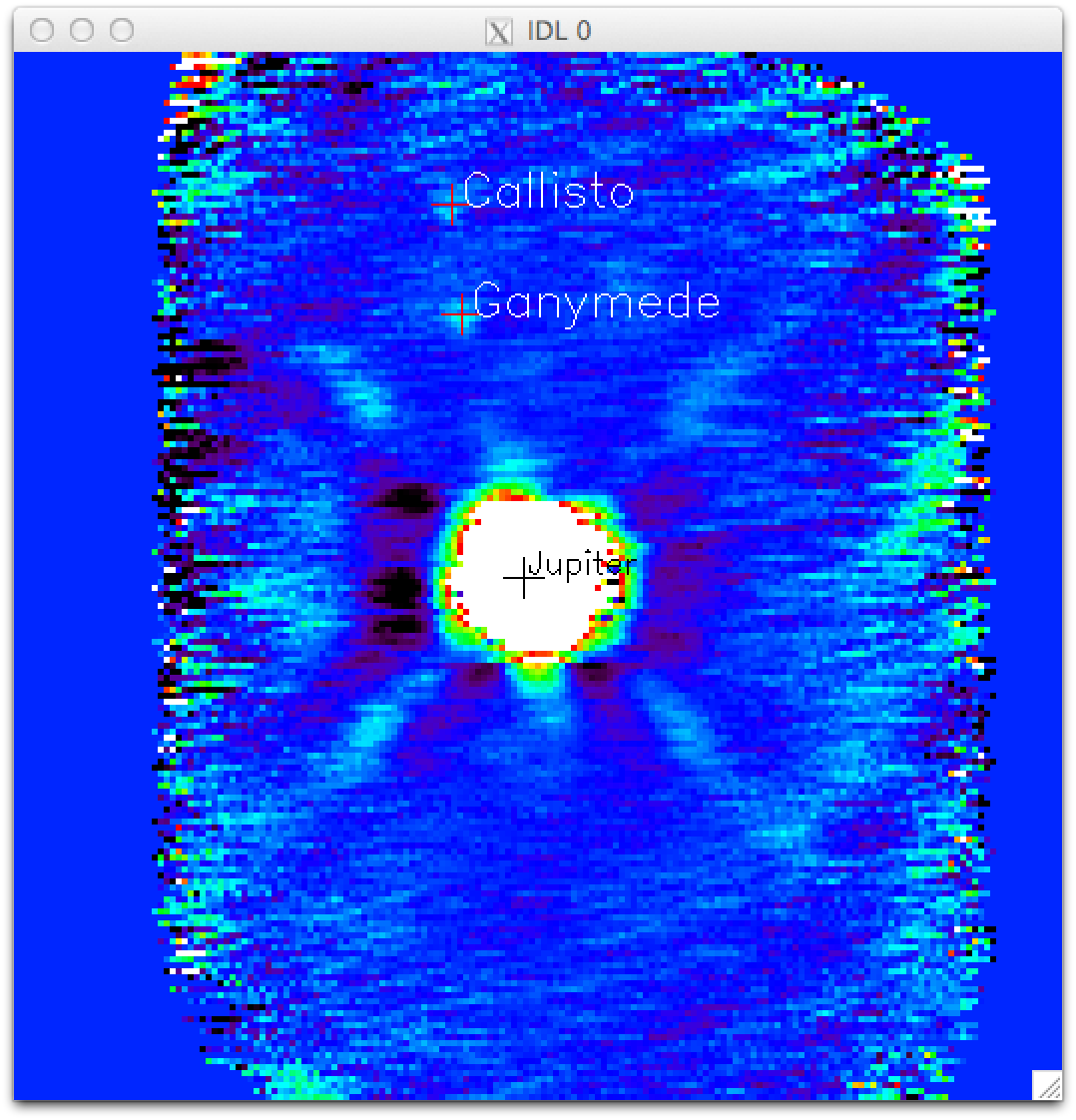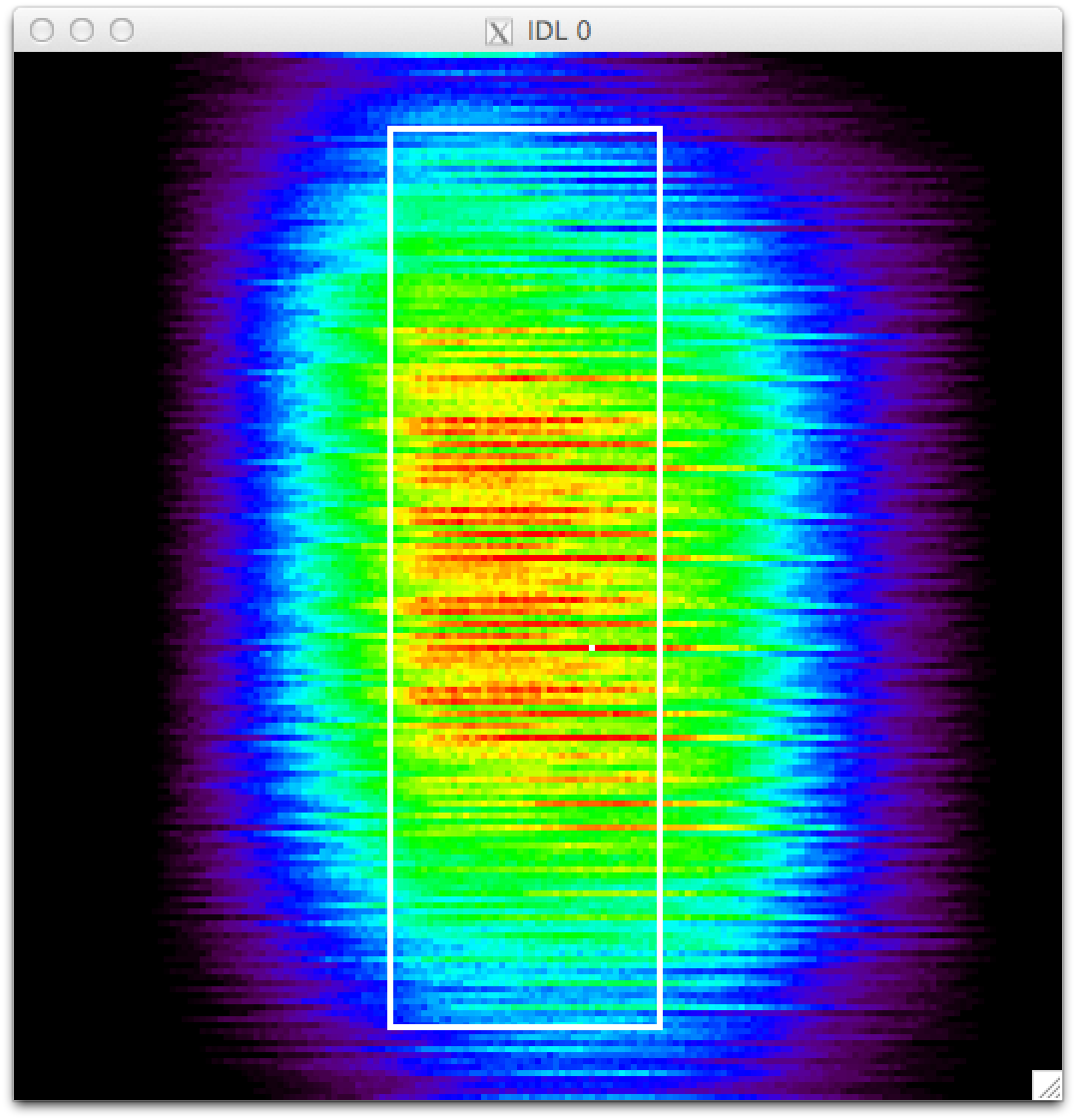|
Size: 5487
Comment:
|
Size: 5600
Comment:
|
| Deletions are marked like this. | Additions are marked like this. |
| Line 79: | Line 79: |
| {{attachment:20151021s27_i2_with_satellites.png||height=415}} {{attachment:20151021s27_nhits2.png||height=415}} |
Back to Nika2 Run1 Offline processing page
Tests of the Observing Modes
Tests made on 20151021
On 20151021, the atmospheric conditions where poor (tau 225 GHz in the range 0.5-1.0), with fog. We were unable to obtain a proper focus, so we moved to test the observing modes. For this we used Jupiter + Ganymede with maps large enough normally to see both targets and check that the observing modes actually perform as expected. No skydip corrections where available at the time.
Observations where done between 04:24 and 06:16 UT.
From the positions of Jupiter and satellites according to JPL Horizon, here are the derived distances and position angles.
In the Azimuth-Elevation reference frame |
||||||||
Time |
dist. |
P.A. |
dist. |
P.A. |
dist |
P.A. |
dist. |
P.A. |
|
(arcsec) |
(degree) |
(arcsec) |
(degree) |
(arcsec) |
(degree) |
(arcsec) |
(degree) |
|
Io |
Europa |
Ganymede |
Callisto |
||||
2015-Oct-21 04:00 UT |
4 |
38 |
83 |
-167 |
184 |
12 |
244 |
10 |
2015-Oct-21 04:30 UT |
3 |
152 |
78 |
-166 |
182 |
12 |
247 |
10 |
2015-Oct-21 05:00 UT |
10 |
-178 |
74 |
-165 |
178 |
13 |
249 |
11 |
2015-Oct-21 05:30 UT |
17 |
-172 |
68 |
-164 |
176 |
15 |
252 |
12 |
2015-Oct-21 06:00 UT |
23 |
-167 |
64 |
-161 |
173 |
17 |
255 |
14 |
2015-Oct-21 06:30 UT |
30 |
-164 |
59 |
-158 |
169 |
20 |
257 |
17 |
2015-Oct-21 07:00 UT |
37 |
-159 |
53 |
-153 |
166 |
24 |
260 |
22 |
In the ICRS (e.g. RA, Dec) Reference frame |
||||||||
2015-Oct-21 04:00 UT |
4 |
-91 |
83 |
113 |
184 |
-65 |
244 |
-63 |
2015-Oct-21 04:30 UT |
3 |
150 |
78 |
113 |
182 |
-65 |
247 |
-63 |
2015-Oct-21 05:00 UT |
10 |
126 |
73 |
113 |
179 |
-66 |
249 |
-63 |
2015-Oct-21 05:30 UT |
17 |
121 |
69 |
113 |
176 |
-66 |
252 |
-63 |
2015-Oct-21 06:00 UT |
24 |
119 |
64 |
112 |
173 |
-66 |
255 |
-63 |
2015-Oct-21 06:30 UT |
30 |
118 |
58 |
112 |
169 |
-66 |
257 |
-63 |
2015-Oct-21 07:00 UT |
37 |
117 |
53 |
112 |
166 |
-66 |
260 |
-63 |
nkliss
- Pako command: nkliss 6
Scan number: 20151021s22
- Note: None
- pipeline param:
- param.map_xsize = 650
- param.map_ysize = 650
- param.map_proj: = ‘azel’
- param.decor_cm_dmin = 40.
nkotf_square
- Pako command: nkotf_square 10
Scan number: 20151021s24 et 20151021s25
- Note: The observation produced 2 scan files. The pipeline does not find Antenna imbfits for scan 25, so only scan 24 was reduced.
- pipeline param:
- param.map_xsize = 700
- param.map_ysize = 700
- param.map_proj: = ‘azel’
- param.decor_cm_dmin = 60.
- param.decor_method = ‘COMMON_MODE_KIDS_OUT’
- results:
- Ganymede and Callisto are both seen at 1mm (left) and 2mm (right) images. The measured distances are 181 arcsec for Ganymede, 250 arcsec for Callisto, and position angle (from top, leftward) of 13 degree and 11 degree respectively, a good match for this observation taken close to 05:00 UT . (Not the that the images are displayed with IDL !order = 1 so that the pixel (0, 0) of the maps are at the top, left of the displayed image. With such !order, the results are as expected. The expected position of Europa is also marked, put it is too close from jupiter.
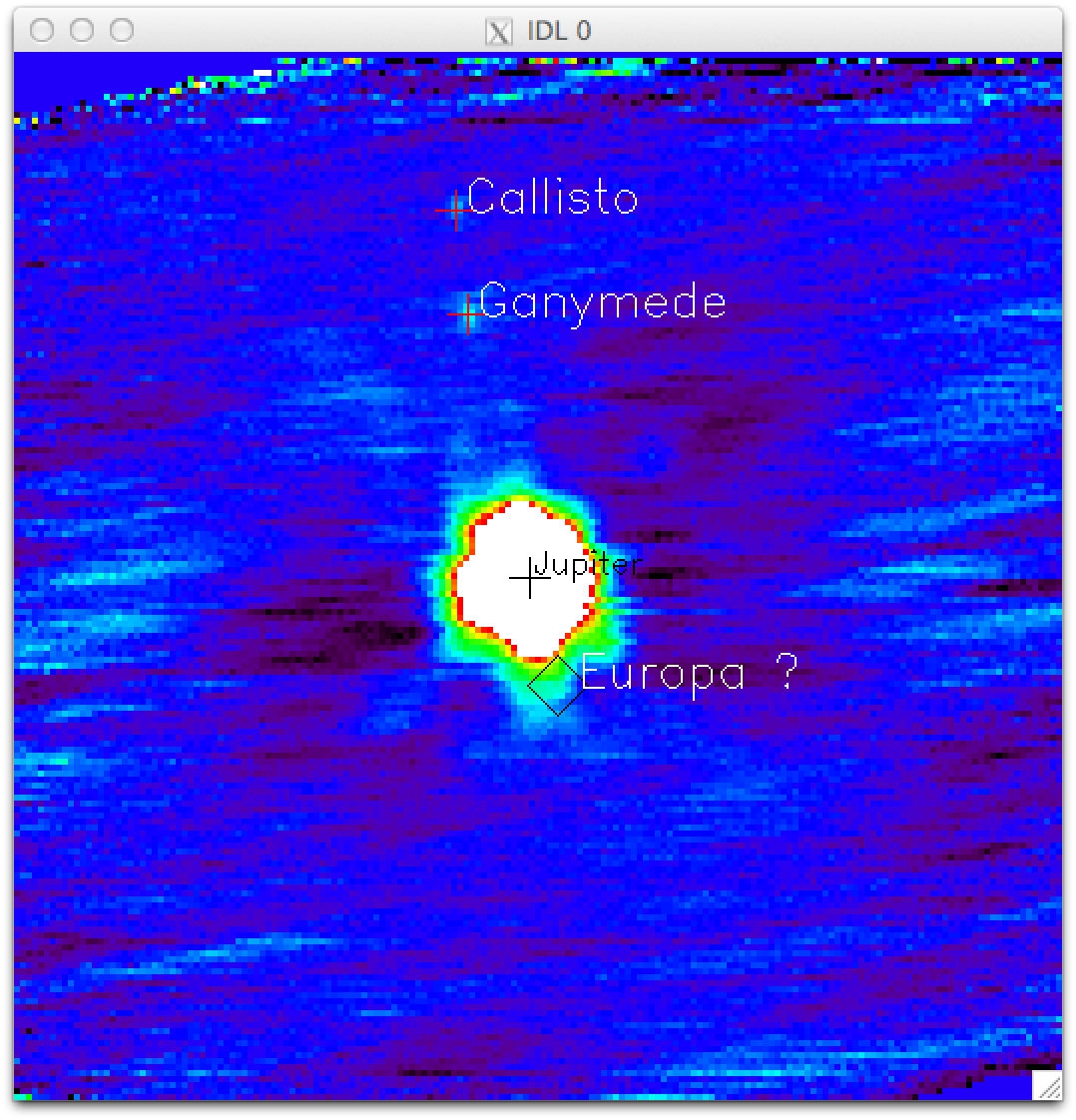
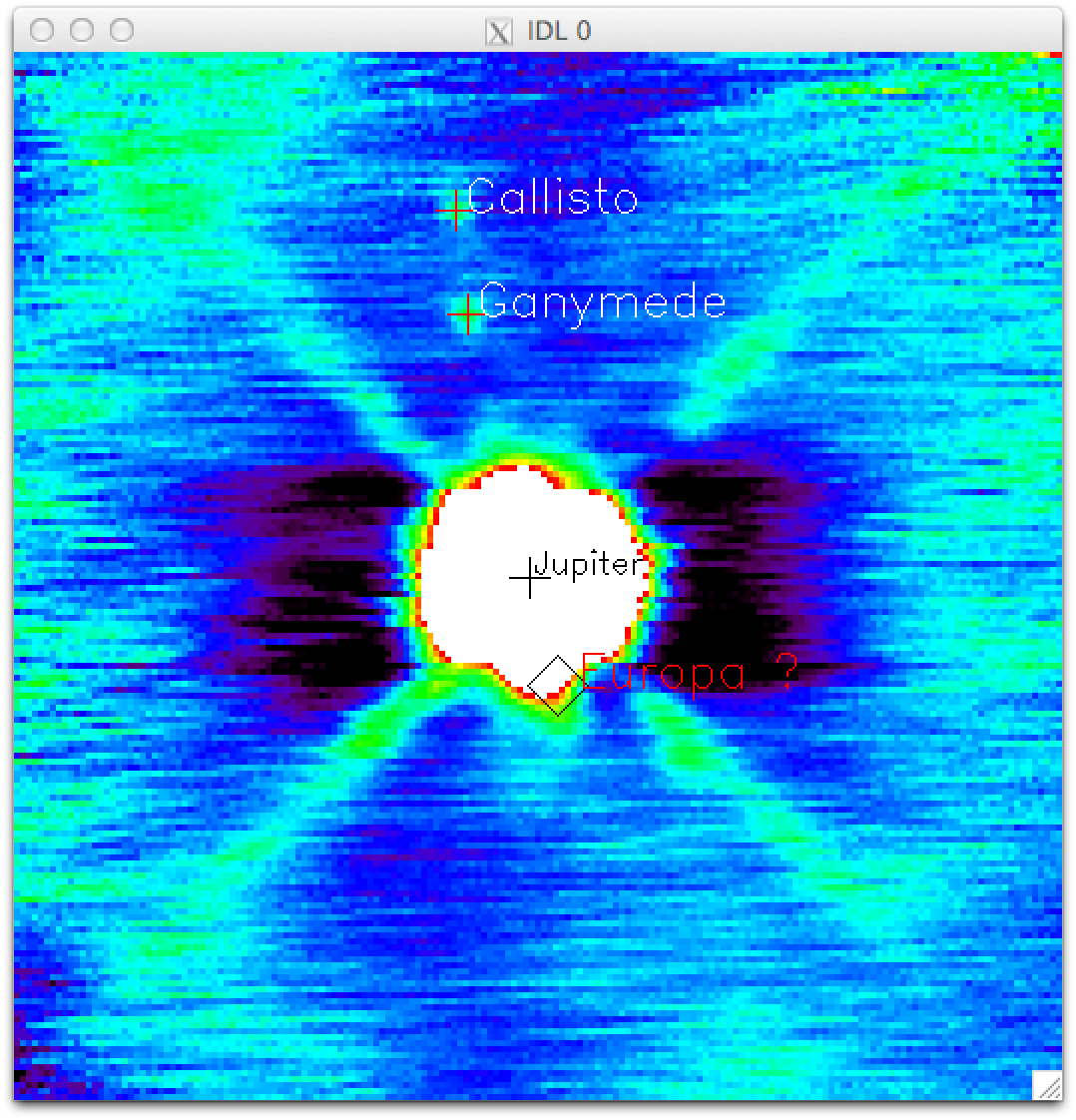
- The coverage at 2mm (grid.nhits_2) is displayed below. The total map is 11.6 x 11.6 arc min on a side. The white square shows the 10 x 10 arc min area indicated by the pako command. Within this area, the coverage is not homogenous, from 130 hits on the edge to 330 in the middle. The dashed area correspond to 250 hits and above, and is 40 square arcmin (6.3 x 6.3 arc min). Maybe we should add a Pako message saying that the homogenous coverage is closer to 6’ x 6’.
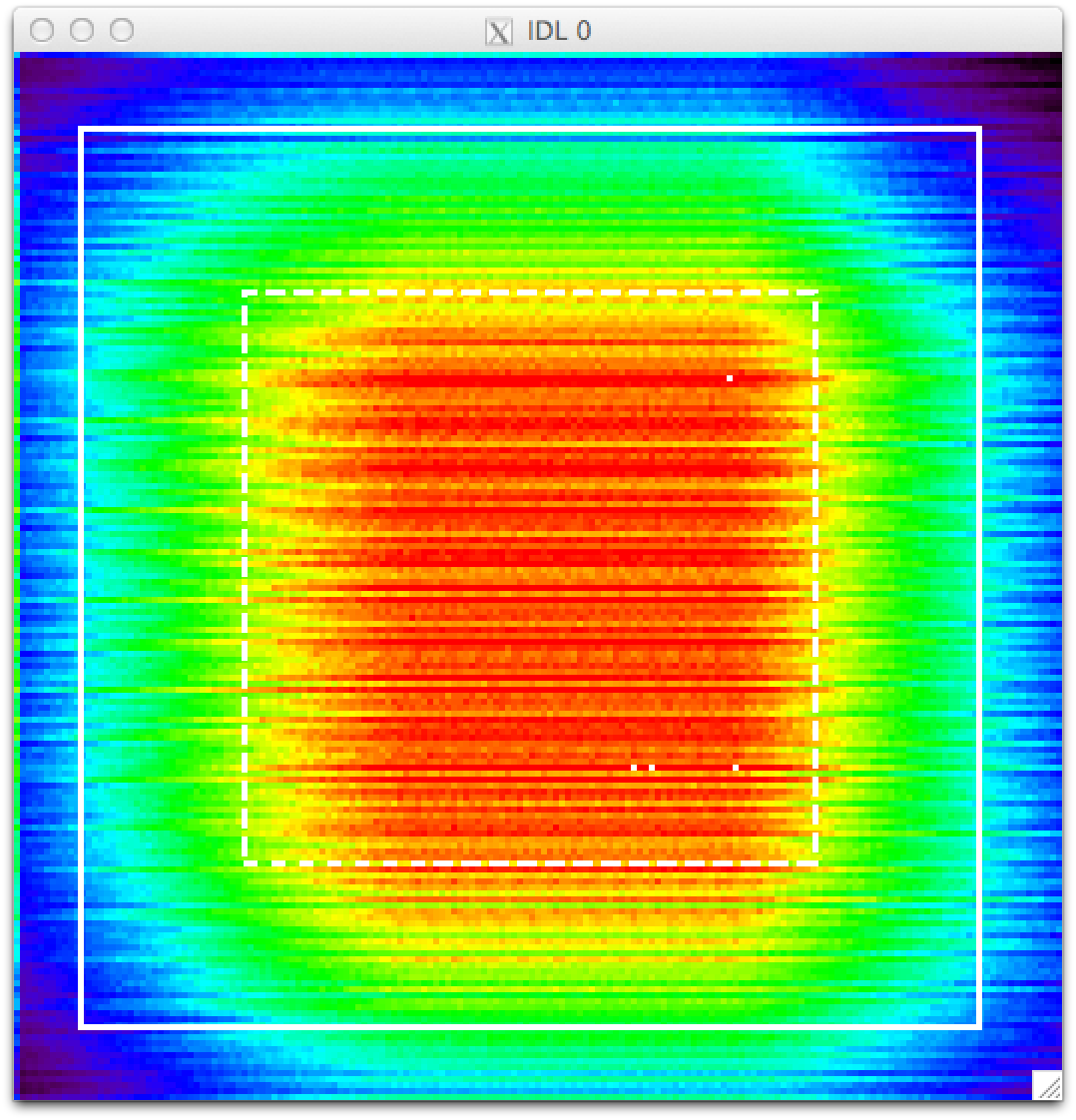
- Observation mode seems OK, except for the remark of the coverage map.
nkotf in azel reference
- Pako command: nkotf 3 10 0 0 30 50azel
Scan number: 20151021s27
- Note: None
- pipeline param:
- param.map_xsize = 700
- param.map_ysize = 700
- param.map_proj: = ‘azel’
- param.decor_cm_dmin = 60.
- param.decor_method = ‘COMMON_MODE_KIDS_OUT’
- results:
- In the 2mm image (left), Ganymede is found at 180”, PA=13, Callisto at 254”, PA = 10. This is in good agreement with Horizon. (again, with convention !order = 1).
- In the array 2 nhits map (right), the scanning at constant elevation is clear. The coverage is inhomogenous. The 3 x 10 arc min expected from the scan is shown by the white rectangle. The coverage in this rectangle goes from 80 to 240 hits...
